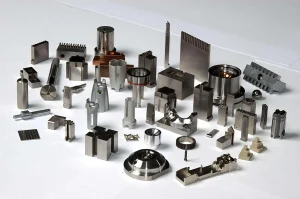Turning is a fundamental machining process that shapes materials into cylindrical parts. While traditional turning and CNC turning share similarities, they differ significantly in execution, precision, and technology. Understanding these differences is essential for manufacturers seeking to optimize their processes. In this article, we will explore the key distinctions between turning and CNC turning.
.webp)
Understanding Traditional Turning
Traditional turning, often referred to as manual turning, involves using a lathe machine operated by a skilled machinist. The operator manually controls the machine, adjusting the cutting tool’s position and speed based on their expertise. This process allows for the creation of cylindrical shapes, but it relies heavily on the operator’s skill.
During traditional turning, the machinist feeds the workpiece into the lathe while controlling the cutting tool. The machinist must monitor the cutting depth and feed rate carefully. This hands-on approach can result in variations in quality and precision. While skilled operators can produce high-quality parts, consistency can be challenging to achieve.
Understanding CNC Turning
CNC turning, or Computer Numerical Control turning, utilizes advanced technology to automate the machining process. In CNC turning, operators input specific dimensions and designs into a computer program. The CNC machine then executes the cutting process automatically.
CNC turning machines rotate the workpiece while a computer-controlled cutting tool shapes it. This automation allows for higher precision and repeatability. Once programmed, CNC machines can produce identical parts consistently, minimizing human error. This capability is especially valuable for high-volume production runs.
Key Differences Between Turning and CNC Turning
- Control Method
Traditional turning relies on manual control. The operator adjusts the machine’s settings based on experience. In contrast, CNC turning uses computer programming to control the machine. This automation enhances precision and reduces variability. - Precision and Tolerances
CNC turning machines achieve tight tolerances, often within a few microns. This level of precision is crucial for industries requiring high-quality components. Traditional turning, while capable of producing good quality, often struggles to match the consistency of CNC turning. - Production Speed
CNC turning machines operate faster than traditional lathes. They can run continuously, producing parts quickly and efficiently. Traditional turning, on the other hand, may require more time due to manual adjustments and monitoring. - Complexity of Designs
CNC turning machines can create intricate designs and complex geometries. Programmers can input detailed specifications into the software, allowing for advanced shapes. Traditional turning is more limited in this regard, as it depends on the operator’s skill to create complex features. - Setup and Changeover
Setting up a CNC turning machine involves programming and calibration, which may take some time initially. However, once set up, the machine can quickly switch between different parts. Traditional turning requires more hands-on adjustments for each new part, leading to longer changeover times. - Operator Skill Requirements
While both methods require skilled operators, the skill sets differ. Traditional turning demands extensive experience and manual dexterity. CNC turning operators need programming knowledge and an understanding of software, but they do not require the same level of manual skill.
Applications of Turning and CNC Turning
Both turning and CNC turning have distinct applications. Traditional turning often suits low-volume production or custom one-off parts. Craftsmen and small workshops commonly use it for specialized tasks.
On the other hand, CNC turning is ideal for high-volume production runs and industries demanding consistent quality. It finds applications in automotive, aerospace, and medical device manufacturing, where precision is paramount.
Conclusion
In summary, the differences between traditional turning and CNC turning are significant. Traditional turning relies on manual control and operator skill, while CNC turning utilizes advanced technology for automation and precision. As industries evolve, CNC turning has become increasingly essential for producing high-quality components efficiently. Understanding these differences allows manufacturers to choose the best method for their specific needs. Embracing CNC turning can lead to improved efficiency, consistency, and product quality in today’s competitive market.






